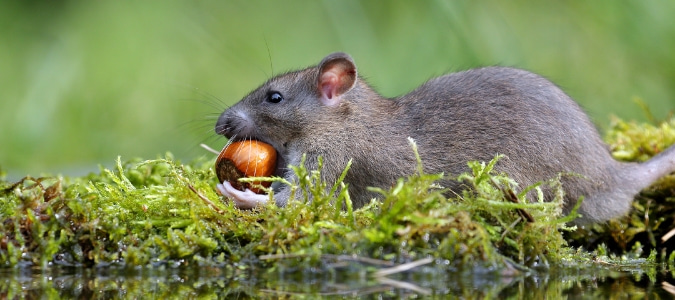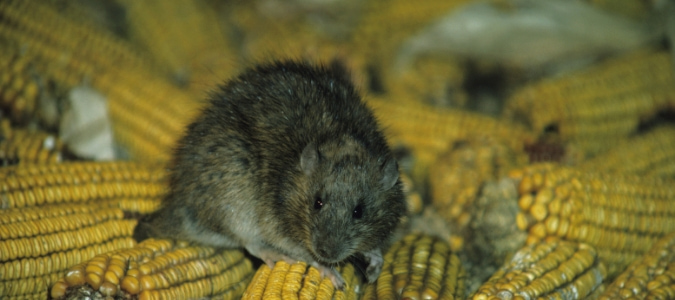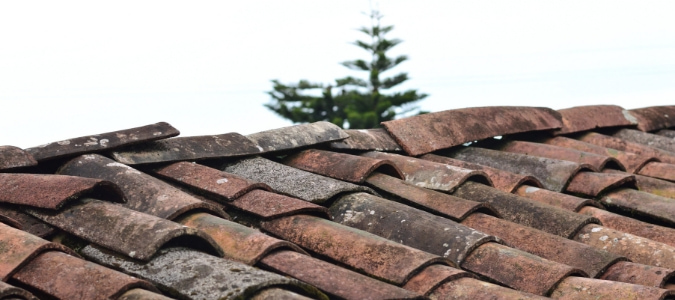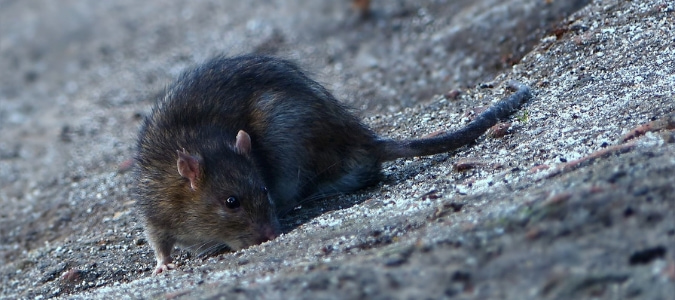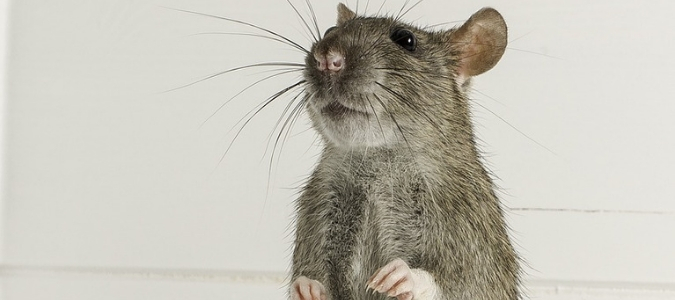
Some people consider rodents to be cute, intelligent animals, and it may be true that domesticated rats can make great pets—but when you encounter rats living in your home or elsewhere on your property, they are nothing less than pests, and must be dealt with as such. Rats that are allowed to live and breed unchecked could cause a great deal of damage if they aren’t dealt with thoroughly and quickly, and they can pose serious health risks to your loved ones. There are two main types of rats in Texas that homeowners commonly find in their homes, garages and attics—Norway rats and roof rats—and both pose a major problem.
What Is A Norway Rat?
Norway rats are large, bulky rodents that normally live outdoors, nesting in burrows in the ground. These rodents are also sometimes referred to as sewer rats, street rats, water rats or Norwegian rats. They do sometimes head indoors, however, in search of food or shelter when these essentials aren’t available outside. This can happen in the wintertime if it’s too cold out for these creatures to rely on their normal food and water sources. A home invasion can also happen anytime throughout the year if a flood or other natural event flushes Norway rats out of their natural burrows.
When Norway rats move into someone’s home or garage, these rodents are likely to follow their burrowing instincts build nests in a space that’s low to the ground, such as in a basement, crawl space or beneath flooring in a home with a pier-and-beam foundation. Since they aren’t skilled climbers, these comon rats aren’t likely to build a nest on anything higher than the first floor in a home.
When Norway rats build nests outdoors, they typically build them near a water source, often beneath something that provides shelter—a woodpile or garbage pile, for example, or dense, overgrown vegetation. These rodents might also burrow along the foundation of a home or other structure to build a nest.
Adult Norway rats can grow up to six or eight inches in length, with scaly tails that are just a bit shorter than their bodies. Their fur is brown and coarse, their ears are small and scaly, and their droppings are about a half-inch long with rounded ends.
Norway Rat: Invasive Species Or Texas Native?
Both Norway rats and roof rats are thought to have come to the United States centuries ago, when they stowed away on ships leaving from Europe and other countries, bound for the New World. Interestingly, it’s thought that Norway rats didn’t actually originate in Norway, but in China.
What does all of this mean? Simply that the Norway rat is a world-traveler that could definitely be viewed as an invasive species in Texas. Although this type of rat is certainly not native to the region, 400 years after its introduction, it might as well be, as it’s a hardy species that has adapted very well to this area.
Roof Rats In Texas
Roof rats got their name because of the fact that these rodents are natural climbers that prefer to build their nests in high-up locations, such as in eaves or attic rafters. How might you compare a roof rat vs. a Norway rat? There are several distinguishing characteristics. For example, roof rats are known as black rats and are a bit smaller, sleeker and darker than Norway rats. Their fur is dark brown or black, and adult roof rats can grow to anywhere from three to eight inches long, with hairless, scaly tails that are even longer than their bodies. Their eyes and ears are a bit larger than those of Norway rats.
Roof rat droppings are also somewhat distinct from Norway rat droppings. Roof rat droppings are a bit shorter, around a centimeter in length, with pointed instead of rounded ends. If you find evidence of rats in a high-up location in your home or garage and you see droppings matching this description, it’s a good sign that your unwelcome visitors are roof rats.
Speaking of evidence of rat activity, here are some telltale signs of a rat problem in your home or elsewhere on your property:
- Rat droppings and/or urine
- Gnaw marks on wood, drywall, wiring, cardboard boxes, etc.
- Bins, boxes or bags in the pantry, or in the area where indoor pets are fed, that have been chewed through
- Scratching or squeaking noises coming from inside the walls or ceiling, especially at night, since rats are nocturnal
- Greasy smudge marks along walls or beams—these are rub marks made by rats’ bodies as they travel along their daily paths between their nests and their food and water sources
- Piled nesting materials in out-of-the-way spaces
- Actual rat sightings (either alive or dead)
Getting Rid Of Roof Rats Or Norway Rats
When it comes to a rat infestation, it almost doesn’t matter which type of rats you have living and breeding in your home or on your property—you just need these pests gone, as soon as possible. Both Norway rats and roof rats are carriers of diseases like salmonellosis, leptospirosis and bubonic plague that can be harmful to both people and pets. These diseases can spread directly, if a person or animal sustains a rat bite, or indirectly, through bites from infected fleas or ticks.
Both roof and Norway rats are also capable of causing extensive damage to the structure of a home or garage, primarily due to their gnawing habits. Rats have long, sharp front teeth that grow continuously, which necessitates constant gnawing; when they build a nest inside a home, they can do a lot of damage. They have even been known to gnaw through electrical wiring, which is a serious fire hazard.
Even if they manage to avoid wires, rats can still cause structural damage to wood, drywall and other elements of the home with their gnawing. Their urine and feces can also cause damage to homes when these waste products soak through a ceiling, floor or other area, not to mention the fact that rat urine and droppings are also unsafe for people from a health standpoint. For obvious reasons, it’s unsanitary to have rats crawling through your pantry, leaving their droppings near your food supply as they help themselves to anything they can access.
For these reasons, if you have rats on the premises, it is very important to take steps right away to get rid of them once and for all. If you believe your rat problem is limited to just a single rat or two that may have wandered into your home, as opposed to a full-on nest or infestation, it may be enough to set out traps for them. Traps should be set out with care to avoid putting them in places where they might be encountered by children or pets.
Rat poison, which is the other most favored do-it-yourself method of treating a rat problem, has many inherent risks. After all, rodenticide isn’t toxic just for the rats and mice it’s intended to kill; it is toxic for any human, pet, bird, squirrel or other animal that comes into contact with it. Most rodenticides are anticoagulants, which means they cause internal bleeding, and they typically take between three and 10 days to kill a rat after it has ingested the poison.
The fact that rat poison doesn’t kill the rodent instantly can be a drawback. Since the rat ingests the poison and then goes on about its daily business for at least a few more days, there is a good chance the creature might end up dying in a hard-to-reach location, such as inside walls or ductwork. This common scenario can result in terrible odors that might linger for days or weeks on end as the dead rat decomposes inside the internal framework of your home. Dead rats inside your walls can also lead to a flea or tick problem in your home, as the tiny parasites vacate the dead body of their former host and seek out new, living bodies to feed on.
ABC Can Protect Your Family From Rodents
One of the best ways to deal with a rat problem is to prevent it from developing in the first place. Since rats move into people’s homes and garages in search of food, water and shelter, cutting off access to these necessities will go a long way toward keeping rats at bay. You can make your property less hospitable to rodents and other types of wildlife by keeping brush, logs and other vegetation cut back and cleared away from your property; closing off any small holes or gaps in the foundation, eaves or other locations that might give small rodents access to your home and keeping both people food and pet food secured in airtight containers that rats can’t access.
Even if you manage to do all of the above, however, you still might find yourself with a rat infestation on your hands, and no clear way to get rid of it. Often, rather than trying to handle it on your own, your best bet is to hire a trained professional to address the problem before it gets even worse. The experienced professionals at ABC Home & Commercial Services are experts in all types of pest control, including rodent control. We know all about rats, including their habits and what methods work best in keeping rodents out of your home. If you have a rat problem, call on ABC to take care of it, so you and your loved ones, including children and pets, can avoid the dangers associated with these uninvited guests.
